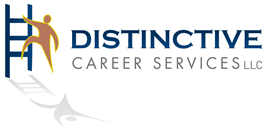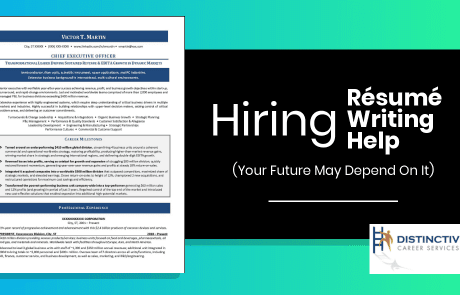
Imagine a resume that not only lists your experiences but tells your story so vividly that hiring managers can’t wait to meet you. In a landscape flooded with qualified candidates, your resume needs to be more than a mere enumeration of bullet points and job titles; it should captivate, persuade, and stand apart.
Through strategic storytelling, your resume transforms into an engaging narrative that showcases your unique value and potential, inviting readers to envision the exciting possibilities you bring to their team.
The Power of Narrative Storytelling in Your Resume
Storytelling is an ancient art form deeply rooted in human culture and psychology. It’s how civilizations have passed down knowledge, shared traditions, and captivated audiences for generations. But what makes storytelling so powerful in a professional setting, particularly in resume writing?
At its core, storytelling engages our emotions, helping to forge connections between the storyteller and the listener—or, in the case of job seeking, between the job applicant and the hiring manager. When a resume transcends the mere listing of facts and taps into narrative elements, it does more than inform—it resonates, leaving a lasting impression.
Consider these benefits:
In short, integrating storytelling into your resume isn’t just about standing out visually or structurally but about weaving a cohesive, engaging narrative that makes hiring managers notice and remember you. By aligning your career stories with the strategic goals and challenges of potential employers, storytelling transforms your resume from a simple document into a compelling and relatable narrative that underscores your unique value in clear, credible ways.
Narrative Resumes 101
Writing a resume that tells a compelling story involves more than just listing achievements and job titles—it requires thoughtful integration of storytelling elements that are familiar to us from literature and film. These elements include characters, setting, plot, conflict, and resolution.
Here’s how these elements can be translated into the context of a resume:
Incorporating these career storytelling elements into your resume makes it not just a static list of jobs and education but a dynamic narrative that highlights how you can guide the employer to success. The key is to weave these elements together in a coherent and focused way, ensuring each part contributes to an overarching narrative that clearly communicates your ability to meet the employer’s needs and add significant value to their organization.

Crafting Your Narrative
To start writing your narrative, reflect on your professional experiences and identify moments that clearly illustrate your qualifications and achievements. Think about:
This resume-writing formula is called the CARS technique (challenge, action, results, strategic impact). By answering these questions, you can begin to form stories that demonstrate your skills and abilities and how you can apply them to benefit future employers.
Consider the following excerpts taken from example resumes to see this formula in action for job seekers at all levels: a receptionist and administrative associate, a marketing manager, and a CEO.
Narrative for a Front-Line Service Worker Resume
Hired to manage front office operations, enhance patient communication, and support six dentists in a high-traffic dental office. Focused on improving patient satisfaction and streamlining administrative processes to handle increased patient flow due to the office’s growing popularity.
Developed and implemented an efficient scheduling system that maximized dentist availability and minimized patient wait times. Enhanced the patient intake process with digital forms and a more effective patient tracking system. Took initiative to improve patient communications by creating informative email newsletters and managing follow-up calls for treatment reminders.
KEY RESULTS:
- Improved Patient Flow: Optimized scheduling to increase daily patient appointments 20%, significantly boosting practice efficiency and dentist availability.
- Enhanced Patient Satisfaction: Introduced a patient feedback system that led to 35% improvement in patient satisfaction scores, thanks to streamlined check-in processes and enhanced communication.
- Streamlined Administrative Tasks: Reduced administrative overhead 25% through effective use of digital tools and automation of routine tasks, allowing more focus on patient care and support.
Breaking Down the Story
Narrative for a Middle-Management Resume
Joined ABC Tech, a startup specializing in innovative health tech devices, as one of the first marketing hires. The company was poised for growth but needed to establish its brand and expand its market presence to capture a larger customer base. Took charge of building a marketing department from the ground up to support rapid expansion and establish a strong market presence amid fierce competition from established brands.
Recruited and built a team of 5 dynamic marketing specialists and developed brand strategy that included a unique brand voice, visual identity, and market positioning. Established a robust marketing foundation, propelling brand recognition and growing the customer base.
KEY RESULTS:
- Doubled the customer base within the first year, with a 70% increase in brand recognition as measured through consumer surveys.
- Led campaigns that drove a 120% increase in annual revenue, positioning ABC Tech as a key player in the health tech market.
- Played key role in securing a Series B funding round, which fueled further expansion and product development.
Breaking Down the Story
Narrative for a Senior Executive Resume
Recruited to take charge as CEO of XYZ Corporation, a company struggling with significant financial distress and operational inefficiencies. The firm faced substantial losses due to a failed joint venture, misdirected focus, and poor cash management. Took immediate action, leading a bold turnaround strategy to stabilize and revitalize the organization.
Initiated and led a comprehensive restructuring plan that involved cutting underperforming units, optimizing product lines, and revamping operational processes. Built and empowered team of senior managers to drive change and innovate across departments. Implemented a multi-pronged strategy to streamline operations, reduce debt, and refocus on core business strengths.
KEY RESULTS:
- Cut losses 50% in the 1st year by selling 2 business units, eliminating 50% of products, and reducing labor by 200 employees. Reversed $15 million in losses to $1 million in profits by the end of the 2nd year and to an estimated $7 million profits annually in 5 years, with $9 million in shareholder distributions.
- Eliminated $20 million in debt and recorded $7 million in cash on the balance sheet and the following year drove double-digit, year-over-year growth in 3 businesses, producing 30% increase in consolidated profitability.
- Grew both revenue and profitability by double-digits in 5 of 6 businesses in 20XX, and launched new start up business that grew from $0 to $5 million sales in just 6 months.
Breaking Down the Story
Connecting with Your Audience: Tailoring Your Resume to Potential Employers
Understanding who will read your resume and what they are looking for is crucial to crafting a targeted resume that resonates and responds effectively to potential employers’ specific needs and challenges.
This understanding helps make your resume relevant and significantly increases your chances of landing an interview. Here’s how you can connect your narrative to your audience:
Research the Employer:
Align Your Story with Employer Needs:
Make it Personal and Update Regularly:
By tailoring your resume to your audience and aligning your narrative with the needs and values of potential employers, you turn your resume into a powerful tool that showcases your qualifications and demonstrates your commitment and fit for the role.
The Importance of Credibility in Your Resume Stories
Credibility is a cornerstone of compelling resume storytelling. When your resume reflects a clear and accurate portrayal of your professional experiences and achievements, it builds trust with potential employers and sets a solid foundation for your job application. Here are key strategies to ensure your resume maintains the highest level of credibility:
1. Integrating Quantitative and Qualitative Results:
2. Maintain Consistency in Details:
3. Ensure Accuracy:
4. Use Clear and Precise Language:
By focusing on these aspects, you ensure that your resume not only tells a compelling story but also maintains the integrity and trustworthiness essential in a competitive job market.
Credibility in your resume bolsters your professional image and increases your chances of securing an interview, as hiring managers look for candidates they can trust to be both capable and honest about their qualifications.
Bringing It All Together: Why Your Resume Story Matters
The power of storytelling in your resume cannot be underestimated. By transforming your resume from a simple list of job duties to a compelling narrative, you engage potential employers in a way that standard resumes simply cannot match. Storytelling not only makes your resume memorable but also enhances the readability and impact of your professional journey.
Here are the key takeaways to remember as you craft your story-driven resume:
A well-crafted story can transform your resume into a dynamic and intriguing reflection of your professional life, offering hiring managers not just a list of where you have been but a compelling preview of what you can achieve in your next role. Whether you are an executive, a middle manager, or entering the workforce, storytelling can elevate your resume and set you apart in the job market.
In conclusion, invest time in crafting and perfecting your resume stories. This investment is not merely about landing a job—it’s about advancing your career by clearly articulating your personal brand and value proposition. Let your resume tell your story, and let that story take you to new heights in your professional journey.
Ready to Transform Your Resume? Let Us Help!
Crafting the perfect resume story is both an art and a science, and it takes expertise to balance it. If you’re ready to take your resume to the next level but aren’t sure where to start, we’re here to help. Our team of experienced resume writers specializes in turning your professional experiences into compelling narratives that resonate with employers and set you apart from the competition.
Don’t let a standard resume hold you back from your dream job. Contact us now to start your journey to a more dynamic and impactful resume. Your story deserves to be told—let us help you tell it the right way.










